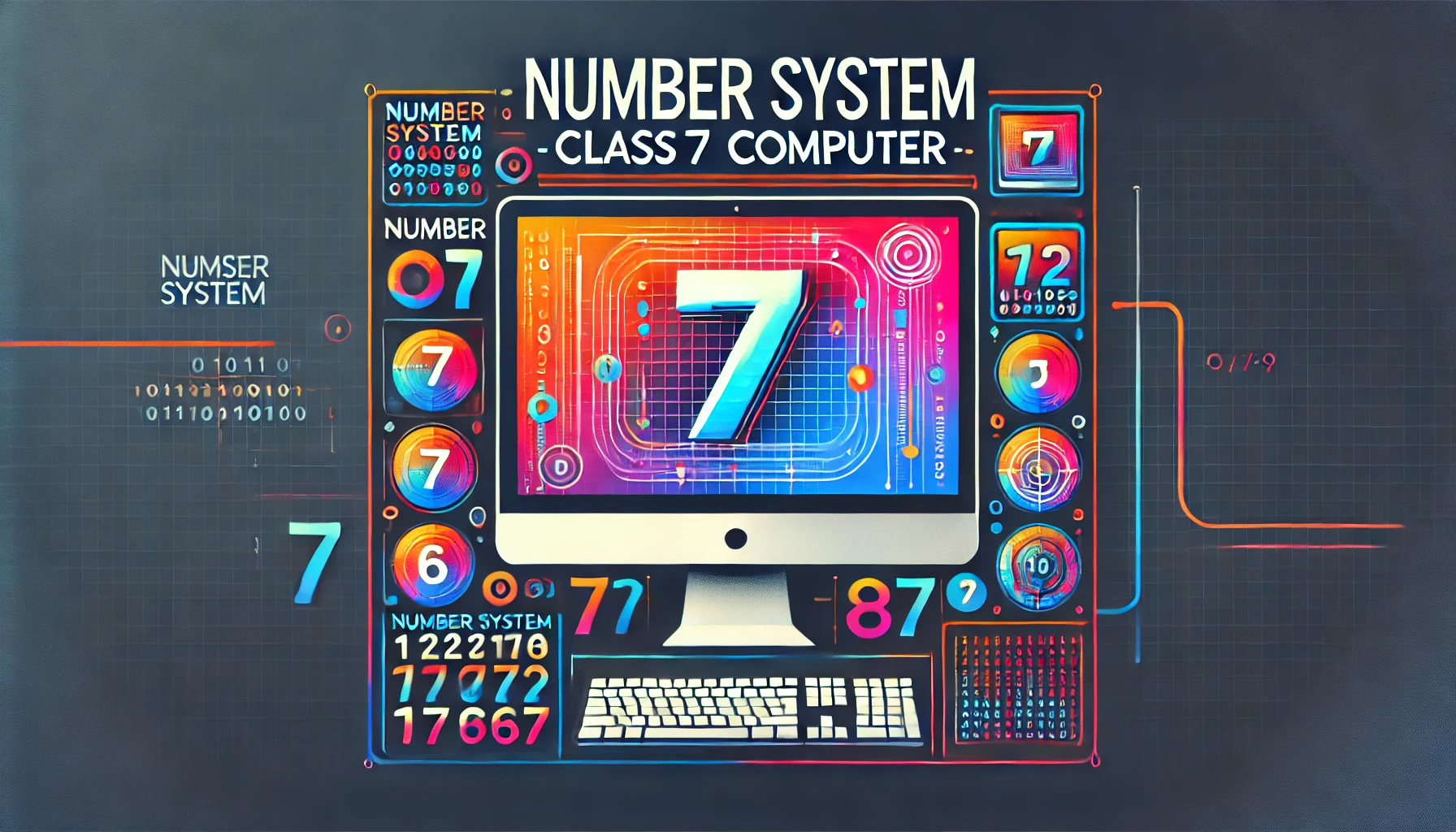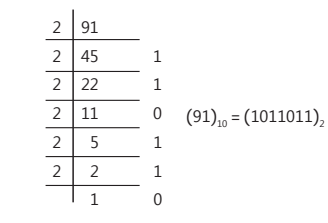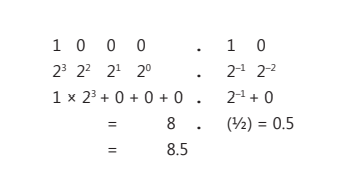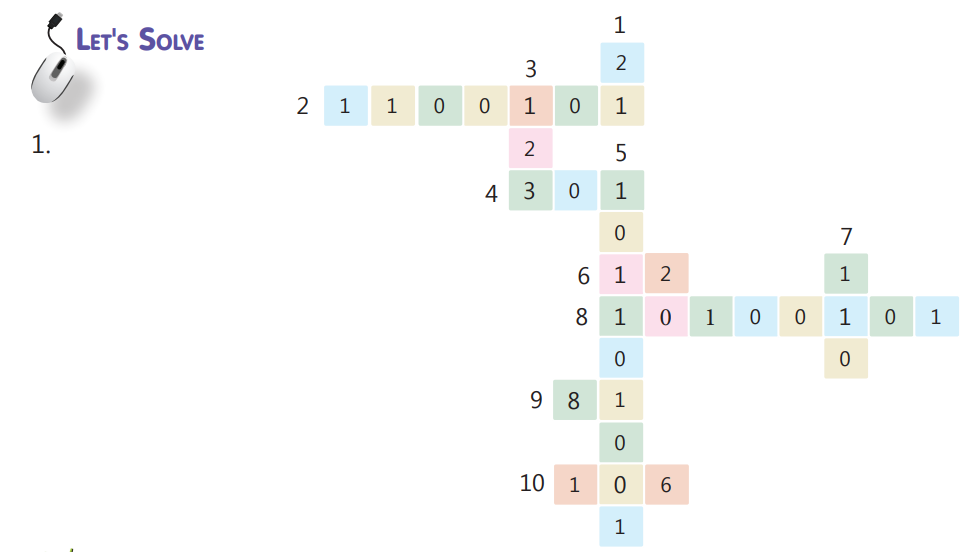Touchpad Computer Book Class 7 Ch 1 Solution Number System
Chapter Overview:
The Number System in Computer Science explores how computers store and process data using different number systems. It introduces students to binary, decimal, octal, and hexadecimal number systems and their interconversions. Understanding these systems is fundamental for programming, data storage, and hardware design.
Topics Covered:
Introduction to Number Systems:
- What is a number system?
- Types of number systems used in computers
- Difference between human and computer number systems
Types of Number Systems:
Number System Base Digits Used Binary 2 0, 1 Decimal 10 0 to 9 Octal 8 0 to 7 Hexadecimal 16 0 to 9, A-F Binary Number System:
- Representation of binary numbers
- How computers use binary for data storage and processing
Decimal Number System:
- Understanding decimal numbers as the standard for humans
- Conversion between decimal and other number systems
Octal Number System:
- Representation and use of octal numbers
- Conversion between octal and other number systems
Hexadecimal Number System:
- Representation using numbers and alphabets (0 to 9 and A to F)
- Applications in memory addressing and color codes
Number System Conversions:
- Decimal to Binary Conversion
- Binary to Decimal Conversion
- Decimal to Octal and Hexadecimal Conversion
- Binary to Octal and Hexadecimal Conversion
Binary Arithmetic:
- Addition, subtraction, multiplication, and division in binary numbers
- Understanding binary overflow
Use of Number Systems in Computers:
- Memory addressing
- Color coding in web design (Hexadecimal)
- ASCII and Unicode encoding
- Machine-level operations
Practical Applications:
- Understanding how data is stored in computer memory
- Recognizing binary representation in software and hardware
Key Learning Outcomes:
- Understand the role of number systems in computer science.
- Perform conversions between binary, decimal, octal, and hexadecimal systems.
- Apply binary arithmetic operations.
- Recognize the importance of number systems in computer hardware and software.

Touchpad Computer Book Class 7 Ch 1 Solution Number System
Let’s Catch up:
Question: Convert the decimal number 91 into binary.

Let’s Catch up:
Question: Convert the binary number 1000.10 into decimal.

Let’s Catch up:
Question: Subtract the binary number 1001 from 10001

TEST YOUR SKILLS
1. Tick() the correct option.
a. In the binary number system, the right-most digit before the fractional point is called.
(i) MSD (ii) LSD (iii) BSD (iv) None of these
Ans:MSD
b. What is the other name for Base 2?
(i) Binary number system (ii) Hexadecimal number system
(iii) Decimal number system (iv) Octal number system
Ans: Binary Number System
c. What are the two symbols present in the binary number system?
(i) 1 and 2 (ii) 0 and 1
(iii) 8 and 9 (iv) 5 and 6
Ans: 0 and 1
d. The decimal number (345)10 is equivalent to ………………..
(i) (101011001)2 (ii) (110111001)2
(iii) (111011101)2 (iv) (111110001)2
Ans: (101011001)2
e. In binary addition, 0+1 is equal to …………………..
(i) 0 (ii) 1
(iii) 10 (iv) 2
Ans: 1
2. Write T for true and ‘F’ for false.
a. A number system is simply a manner of counting.
Ans: T
b. The base of the decimal number system is 8.
Ans: F
c. The word binary comes from “Bi- meaning two.
Ans: T
d. The octal number system is used as a shorthand representation of long binary numbers.
Ans: T
e. The hexadecimal number system consists of 16 digits.
Ans: T
3. Fill in the blanks using the words from the help box.
(binary, 0, 2, 8, 10, decimal number)
a. In binary subtraction, 1-1 equals to …………………..
Ans: 0
b. The base of the binary number system is ………………..
Ans: 2
c. The base of the ……………………. system is 10.
Ans: Decimal Number
d. In binary addition, 1+1 is equal to …………………..
Ans: 10
e. The octal number system consists of digits.
Ans: 8
f. Computer system understands ……………….. numbers.
Ans: Binary
4. Short answer type questions.
a. What is an octal number system?
Ans: The octal number system is used as a shorthand representation of long binary numbers.
b. How many bits are there in 1 nibble?
Ans: 4 bits make 1 nibble
c. What do you mean by base in a number system?
Ans: The base of a number system represents the total number of digits in a number system.
5. Long answer type questions.
a. What is a number system? Explain.
Ans: A Number System is simply a method of counting. There are many number systems in existence. The digital computer represents all kinds of data and information like audio, graphics, video, text, and numbers in binary form. The total number of digits used in a number system is called its base or radix.
b. What are the rules to convert a decimal number into a binary number?
Ans: To convert a decimal number into a binary number, follow these steps:
Step 1: Divide the decimal number by 2 (the base of the binary number system).
Step 2: Note down the quotient and the remainder.
Step 3: Divide the quotient obtained again by 2 and note down the resulting quotient and remainder.
Step 4: Repeat the procedure till you reach a quotient less than 2.
Step 5: List the last quotient and all the remainder (moving from bottom to top). You will get your binary number
c. Write the rules to subtract two binary numbers.
Ans: 
Solve the crossword by filling it with equivalent decimal numbers or binary numbers.
Down Across
1. (10101) 2 2. (101) 10
3. (1111011) 2 4. (100101101) 2
5. (361) 10 6. (1100) 2
7. (6) 10 8. (165) 10
9. (1010001) 2 9. (1101010) 2

TECH PRACTICE
Solve the following.
1. Convert (10111.011)2 into its decimal equivalent.
Ans: 23.375
2. Subtract (1101)2 from (100110)2.
Ans: 011001
3. Add the following binary numbers.
a. (1000)2 and (101)2
Ans: 01101
b. (1011)2 and (101)2
Ans: 1000
c. (1001)2 and (101)2
Ans: 01110
d. (1111)2 and (1111)2
Ans: 011110
e. (11001)2 and (10101)2
Ans: 0101110
4. Convert the following decimal numbers into binary.
α. (19)10
Ans: 10011
b. (98)10
Ans: 1100010
c. (75)10
Ans: 1001011
d. (37)10
Ans: 100101
e. (54)10
Ans: 110110
This solution is useful for the students of the CBSE and HBSE boards.
Visit vacancyconnect.com regularly for more valuable & Real Information.